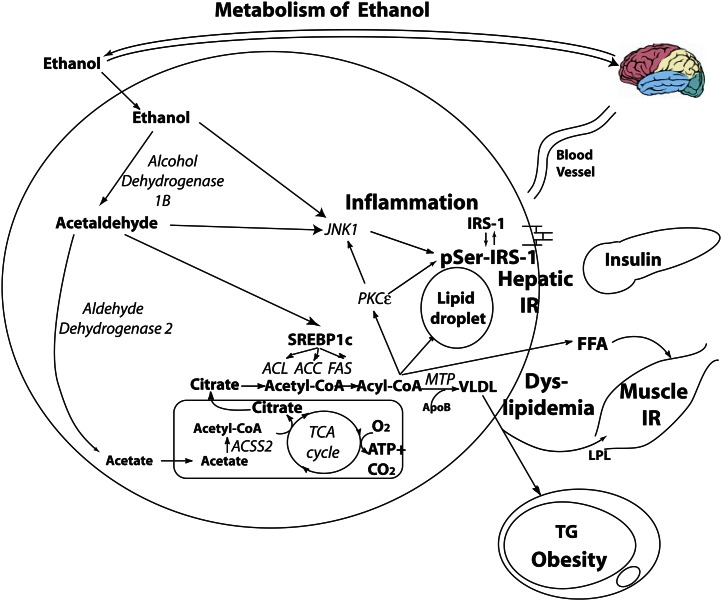Figure 2.
Hepatic ethanol metabolism. Of an ingested load, 80% reaches the liver. Ethanol induces the following: 1) de novo lipogenesis and dyslipidemia; 2) c-jun N-terminal kinase (JNK1) activation, which serine phosphorylates hepatic insulin receptor substrate 1 (IRS-1), rendering it inactive and contributing to hepatic insulin resistance, which promotes hyperinsulinemia and influences substrate deposition into fat; 3) hepatic lipid droplet formation, leading to steatosis; and 4) stimulation of the reward pathway, promoting continuous consumption. ACC, acetyl CoA carboxylase; ACL, ATP citrate lyase; ACSS2, acyl-CoA synthetase short-chain family member 2; ApoB, apolipoprotein B; FAS, fatty acid synthase; IR, insulin resistance; IRS-1, insulin receptor substrate 1; LPL, lipoprotein lipase; MTP, microsomal transfer protein; PGC-PI3K, phosphatidylinositol 3-kinase; PKCɛ, protein kinase C-ɛ SREBP-1c, sterol regulatory element binding protein 1c. Reproduced from (59) with permission.

